15 - 19 August 2022
In space, we stand on the shoulders of giants, but we can become giants as well

Voyager-1 heading off on its mammoth journey in 1977 (Image: NASA/JPL-Caltech/KSC)
It’s now been 45 years since the epic journeys of Voyager-1 and 2 began. Today, humankind follows in the footsteps of this inspirational mission, which is still sending us data now from interstellar space. Now is our turn to write the stories that will inspire future generations to continue our journey in space.
2022 has so far been a remarkable year for technological innovation, perhaps equal to that of the Voyager missions. The difference is that now our technology is of course far more advanced, but we’re also designing for a future where humankind returns to outer space, for good. This is also being reflected in the legal challenges, on how to govern space, and has raised questions about how our relations on Earth impacts our future in space.
Recent years could be seen as “laying the foundations” for our long-term future in space, with an increasingly prominent role played by new space players and the innovative private sector. We’re also witnessing the birth of giants, who will be the founders of new space.
Technology just keeps moving forwards
3D printing, private moon landings and lunar exploration are areas that all witnessed some big steps forwards this week. It’s difficult to find a week this year that has not seen notable breakthroughs in the space sector.
NASA has announced a challenge focussed on using AM (additive manufacturing/3D printing) for in-situ manufacturing on the moon. Students are challenged with developing methods of extracting metal from lunar minerals, in order to manufacture tools and structures. Also, NASA have announced the winning teams of their “Watts on the Moon” challenge, aimed at developing ideas to generate power in the lunar surface. (See the links below to learn more about the teams).
Relativity Space are nearing the launch of their 3D printed rocket, marking another step forwards for AM in the launch market. Their launch window opens on the 30th September. UK company Skyrora are also a step closer to their first first launch after completing a static-fire test of their second stage. Aiming for 2023, they could become the first company to conduct a vertical launch from UK soil.
Astrobotic, US company developing their Peregrine lunar lander, have successfully completed testing with end-to-end test communications the Deep Space Network (DSN) from NASA’s Jet Propulsion Laboratory (JPL), moving a step closer to their maiden journey to the surface of the moon. On the surface of the moon, the lunar rover market is becoming ever more populated, with a team from the Delft University of Technology developing their “Lunar Zebro” rover, a 6-legged rover which will be the smallest and lightest rover yet.
Leading Japanese space robotics firm GITAI have also announced developments of their GITAI IN1 robotic arm, which will have potential applications on the moon and Mars. The arm increases mobility and capability, and is able to connect to different vehicles such as lunar rovers and landers. This could be essential for off-world construction and manufacture.
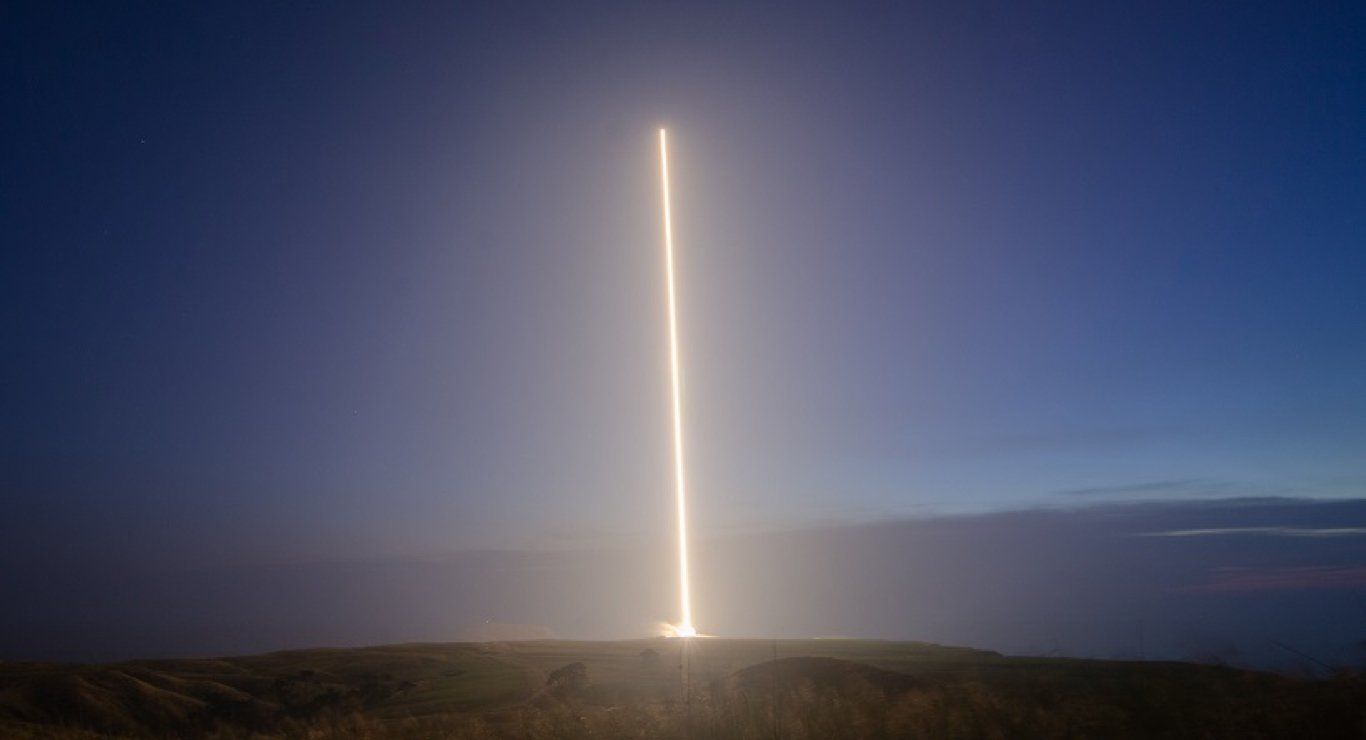
Rocket Lab laucnched US NRO payloads this year (Image: Sam Toms)
Is policy-making catching up in space? In some cases it is being forced to
One point we often raise is that of law-making lagging behind this technological revolution in space. Policies will need to be updated as humankind looks to exploit the riches of space. But also, policies are being forced to change due to the impact shifting international relations on Earth.
US vice president Kamala Harris has announced that the US will update commercialspace regulations, in order to meet the needs of the rapidly growing private sector, claiming that current rules are “simply outdated”. Whilst not yet mentioning specific changes, it must be considered whether any new policies may suit increased international cooperation, or look to only boost US-led space innovation. Policy update could certainly be a positive sign for the US market, but how will it be received by the international market, and how can the world incorporate international rules to allow for inclusive and equal opportunities in space?
Fallout from the Ukraine conflict also continues to affect relations in the space sector, to the extent that policy has been forced to change. Long-stading launch relationships between Russia, Europe and the US have taken a blow, and SpaceX will now look to provide their launch services in Europe (perhaps temporarily whilst Ariane wait to release their Ariane 6 rocket, amongst other developing European launch providers). France have also opted-out of partnering with Russia for what would have been a cooperative project to develop an orbiter for the Indian Space Agency (ISRO).
Russia have also hinted further towards exiting the ISS, with the presentation of a model of their own “Ross” space station. However, for now, the ISS continues to a beacon of hope for political neutrality and cooperation in space, as Russian cosmonauts this week carried out work to fit the European robotic arm to the exterior of the ISS.
There are also questions being raised about the role of private companies in providing services to military customers. How can the commercial sector remain neutral in space, when they launch military satellites and observation technologies? Rocket Lab claim that the Ukraine conflict has softened its public image in New Zealand, in relation to its military launch ties. Whilst this may be good news for the company and their image on the world stage, is it almost a direct admission to be taking sides in an international conflict, and thus voiding their neutrality? A member of the Rocket Lab Monitor group in New Zealand stated that, despite feeling for the Ukrainian people, New Zealand shouldn’t be participating in “someone else's war”.
Is it important that policies are set in regards to how far the commercial sector can work with military bodies before they become directly involved in international conflict and politics? Political neutrality in space is vital if we are to build a peaceful and successful future in space, for all humankind.
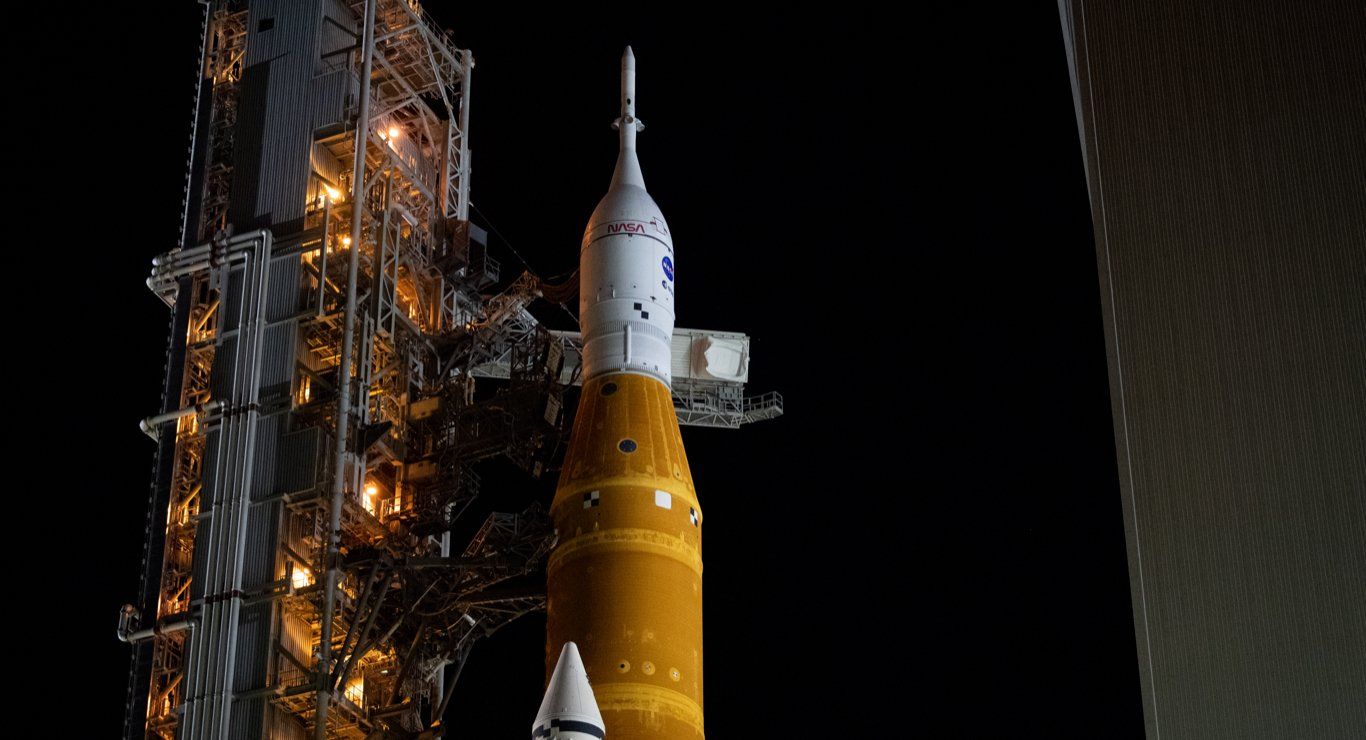
Artemis missions also set to become giant of space? (Image: NASA/Joel Kowsky)
We’re standing on the shoulders of giants
The heroes of the space sector have previously been graduated from a small number of groups, mostly from NASA, the USSR and Russia. Household names such as Yuri Gagarin, Sputnik, the Apollo Missions or Voyager have inspired generations to dream about space and the origins of the universe.
Another one of these names is being made later this month, as NASA rolls out their giant SLS rocket for the first Artemis launch, in an unmanned mission around the Moon, laying the foundations for humankind’s return to the lunar surface. Will the name Artemis be another name that is remembered for generations to come? NASA have also announced a mission to explore the largest known moon of Saturn. The moon, Titan, is thought to contain water ice and other organics. Interestingly, the mission will use a rotor-vehicle, similar to the Ingenuity helicopter on Mars.
But now there are also new industry pioneers, coming form the private sector. One of these, most notably this year, has been Rocket Lab. After pushing their Electron rocket to its limits, they will now strive to become the first private company to establish a mission to Venus, by 2023, also using Electron and Photon, which were used for the CAPSTONE mission.
As we fondly remember (and still benefit from) the achievements of the Voyager mission 45 years on, perhaps the new household names such as SpaceX or Rocket Lab will live on for just as long, or even longer. As global interest in the benefits of outer space grows, let us hope they can also be remembered for laying the foundations for a peaceful and cooperative future in outer space.
External Links
This Week
*News articles posted here are not property of ANASDA GmbH and belong to their respected owners. Postings here are external links only.
Our future in space
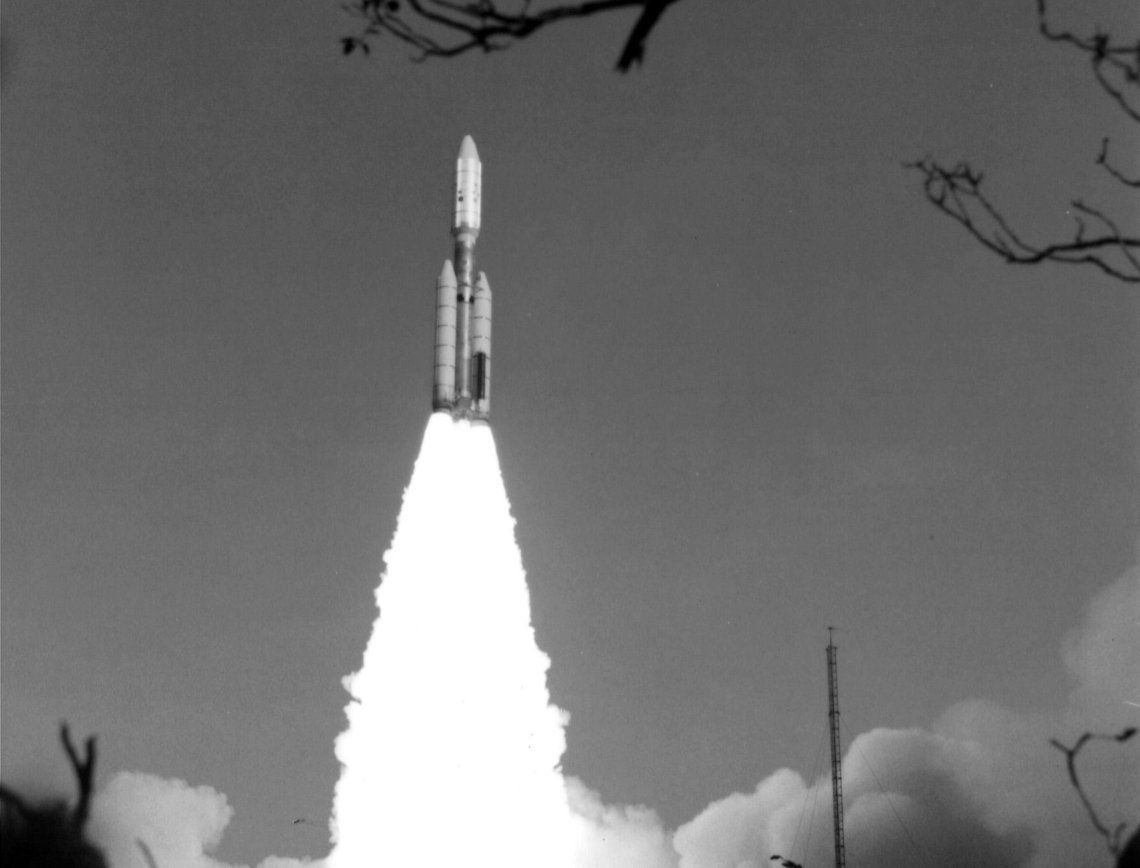
Voyager-1 heading off on in 1977 (Image: NASA/JPL Caltech/KSC)
15 - 19 August, 2022
In space, we stand on the shoulders of giants, but we can become giants as well
It’s now been 45 years since the epic journeys of Voyager-1 and 2 began. Today, humankind follows in the footsteps of this inspirational mission, which is still sending us data now from interstellar space. Now is our turn to write the stories that will inspire future generations to continue our journey in space.
2022 has so far been a remarkable year for technological innovation, perhaps equal to that of the Voyager missions. The difference is that now our technology is of course far more advanced, but we’re also designing for a future where humankind returns to outer space, for good. This is also being reflected in the legal challenges, on how to govern space, and has raised questions about how our relations on Earth impacts our future in space.
Recent years could be seen as “laying the foundations” for our long-term future in space, with an increasingly prominent role played by new space players and the innovative private sector. We’re also witnessing the birth of giants, who will be the founders of new space.
Technology just keeps moving forwards
3D printing, private moon landings and lunar exploration are areas that all witnessed some big steps forwards this week. It’s difficult to find a week this year that has not seen notable breakthroughs in the space sector.
NASA has announced a challenge focussed on using AM (additive manufacturing/3D printing) for in-situ manufacturing on the moon. Students are challenged with developing methods of extracting metal from lunar minerals, in order to manufacture tools and structures. Also, NASA have announced the winning teams of their “Watts on the Moon” challenge, aimed at developing ideas to generate power in the lunar surface. (See the links below to learn more about the teams).
Relativity Space are nearing the launch of their 3D printed rocket, marking another step forwards for AM in the launch market. Their launch window opens on the 30th September. UK company Skyrora are also a step closer to their first first launch after completing a static-fire test of their second stage. Aiming for 2023, they could become the first company to conduct a vertical launch from UK soil.
Astrobotic, US company developing their Peregrine lunar lander, have successfully completed testing with end-to-end test communications the Deep Space Network (DSN) from NASA’s Jet Propulsion Laboratory (JPL), moving a step closer to their maiden journey to the surface of the moon. On the surface of the moon, the lunar rover market is becoming ever more populated, with a team from the Delft University of Technology developing their “Lunar Zebro” rover, a 6-legged rover which will be the smallest and lightest rover yet.
Leading Japanese space robotics firm GITAI have also announced developments of their GITAI IN1 robotic arm, which will have potential applications on the moon and Mars. The arm increases mobility and capability, and is able to connect to different vehicles such as lunar rovers and landers. This could be essential for off-world construction and manufacture.
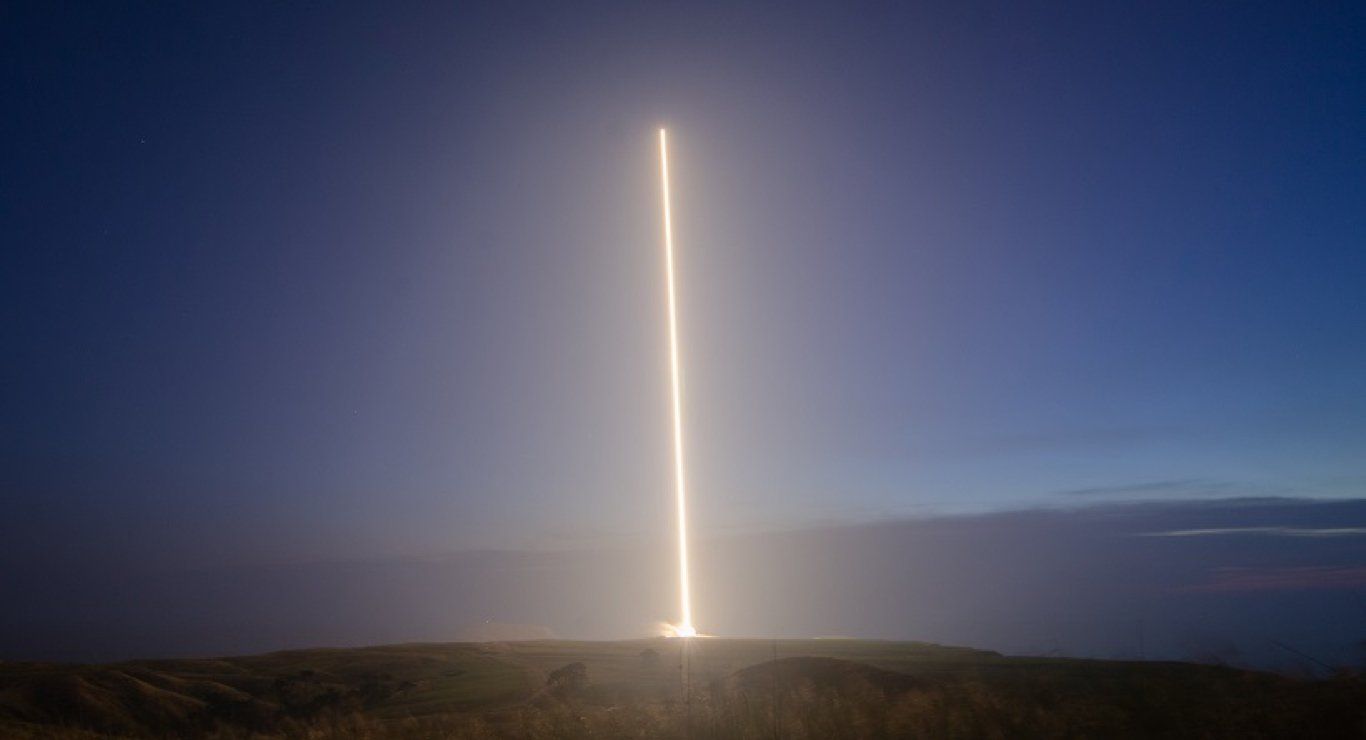
Rocket Lab laucnched US NRO payloads this year (Image: Sam Toms)
Is policy catching-up with the technology? In some cases it is being forced to do so
One point we often raise is that of law-making lagging behind this technological revolution in space. Policies will need to be updated as humankind looks to exploit the riches of space. But also, policies are being forced to change due to the impact shifting international relations on Earth.
US vice president Kamala Harris has announced that the US will update commercial space regulations, in order to meet the needs of the rapidly growing private sector, claiming that current rules are “simply outdated”. Whilst not yet mentioning specific changes, it must be considered whether any new policies may suit increased international cooperation, or look to only boost US-led space innovation. Policy update could certainly be a positive sign for the US market, but how will it be received by the international market, and how can the world incorporate international rules to allow for inclusive and equal opportunities in space?
Fallout from the Ukraine conflict also continues to affect relations in the space sector, to the extent that policy has been forced to change. Long-stading launch relationships between Russia, Europe and the US have taken a blow, and SpaceX will now look to provide their launch services in Europe (perhaps temporarily whilst Ariane wait to release their Ariane 6 rocket, amongst other developing European launch providers). France have also opted-out of partnering with Russia for what would have been a cooperative project to develop an orbiter for the Indian Space Agency (ISRO).
Russia have also hinted further towards exiting the ISS, with the presentation of a model of their own “Ross” space station. However, for now, the ISS continues to a beacon of hope for political neutrality and cooperation in space, as Russian cosmonauts this week carried out work to fit the European robotic arm to the exterior of the ISS.
There are also questions being raised about the role of private companies in providing services to military customers. How can the commercial sector remain neutral in space, when they launch military satellites and observation technologies? Rocket Lab claim that the Ukraine conflict has softened its public image in New Zealand, in relation to its military launch ties. Whilst this may be good news for the company and their image on the world stage, is it almost a direct admission to be taking sides in an international conflict, and thus voiding their neutrality? A member of the Rocket Lab Monitor group in New Zealand stated that, despite feeling for the Ukrainian people, New Zealand shouldn’t be participating in “someone else's war”.
Is it important that policies are set in regards to how far the commercial sector can work with military bodies before they become directly involved in international conflict and politics? Political neutrality in space is vital if we are to build a peaceful and successful future in space, for all humankind.

Artemis missions also set to become giant of space? (Image: NASA/Joel Kowsky)
We’re standing on the shoulders of giants
The heroes of the space sector have previously been graduated from a small number of groups, mostly from NASA, the USSR and Russia. Household names such as Yuri Gagarin, Sputnik, the Apollo Missions or Voyager have inspired generations to dream about space and the origins of the universe.
Another one of these names is being made later this month, as NASA rolls out their giant SLS rocket for the first Artemis launch, in an unmanned mission around the Moon, laying the foundations for humankind’s return to the lunar surface. Will the name Artemis be another name that is remembered for generations to come? NASA have also announced a mission to explore the largest known moon of Saturn. The moon, Titan, is thought to contain water ice and other organics. Interestingly, the mission will use a rotor-vehicle, similar to the Ingenuity helicopter on Mars.
But now there are also new industry pioneers, coming form the private sector. One of these, most notably this year, has been Rocket Lab. After pushing their Electron rocket to its limits, they will now strive to become the first private company to establish a mission to Venus, by 2023, also using Electron and Photon, which were used for the CAPSTONE mission.
As we fondly remember (and still benefit from) the achievements of the Voyager mission 45 years on, perhaps the new household names such as SpaceX or Rocket Lab will live on for just as long, or even longer. As global interest in the benefits of outer space grows, let us hope they can also be remembered for laying the foundations for a peaceful and cooperative future in outer space.
Share this article
External Links
This Week
*News articles posted here are not property of ANASDA GmbH and belong to their respected owners. Postings here are external links only.
15 - 19 August 2022
In space, we stand on the shoulders of giants, but we can become giants as well
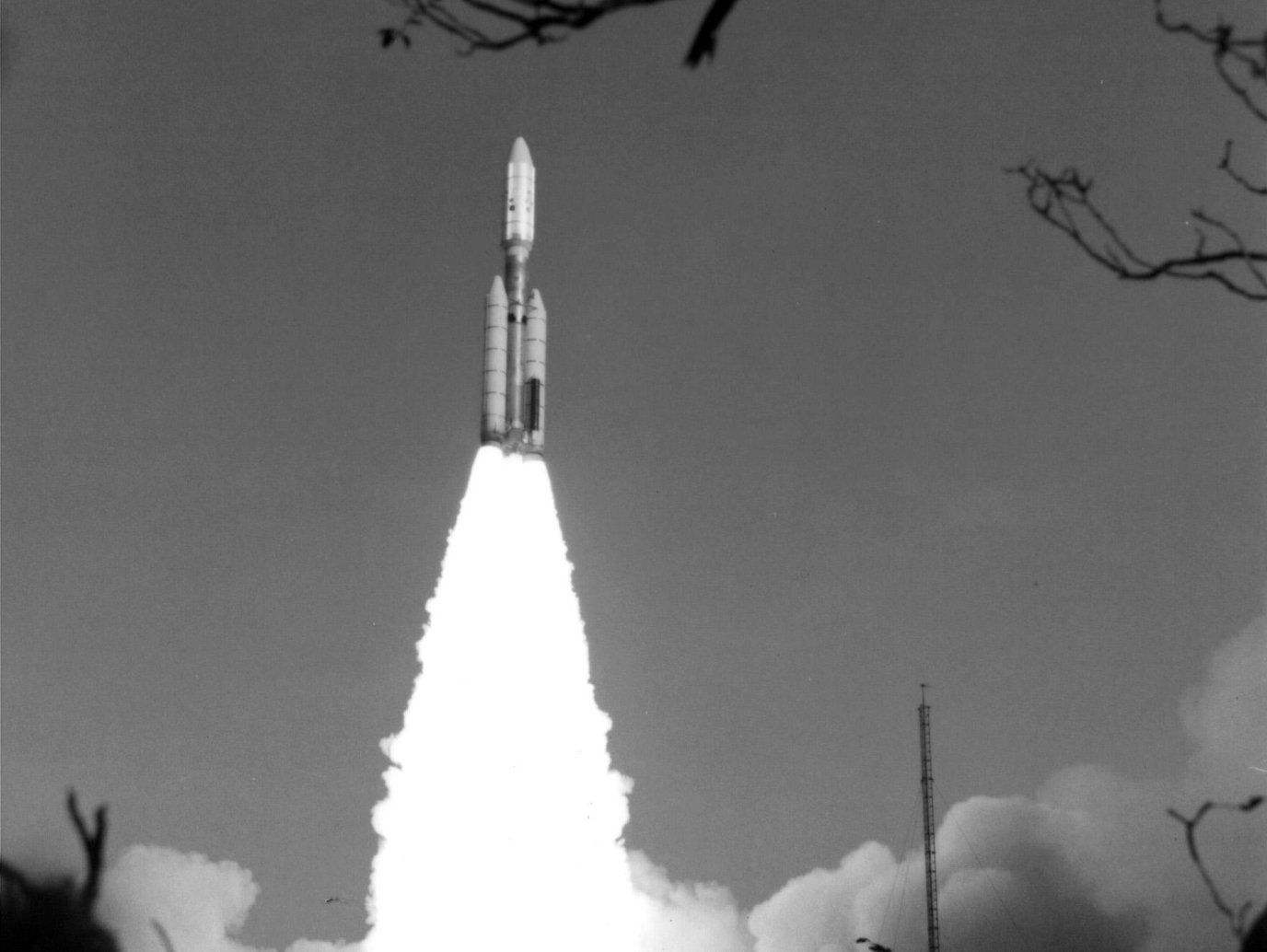
Voyager-1 heading on its mammoth journey in 1977 (Image: NASA/JPL-Caltech/KSC)
It’s now been 45 years since the epic journeys of Voyager-1 and 2 began. Today, humankind follows in the footsteps of this inspirational mission, which is still sending us data now from interstellar space. Now is our turn to write the stories that will inspire future generations to continue our journey in space.
2022 has so far been a remarkable year for technological innovation, perhaps equal to that of the Voyager missions. The difference is that now our technology is of course far more advanced, but we’re also designing for a future where humankind returns to outer space, for good. This is also being reflected in the legal challenges, on how to govern space, and has raised questions about how our relations on Earth impacts our future in space.
Recent years could be seen as “laying the foundations” for our long-term future in space, with an increasingly prominent role played by new space players and the innovative private sector. We’re also witnessing the birth of giants, who will be the founders of new space.
Technology just keeps moving forwards
3D printing, private moon landings and lunar exploration are areas that all witnessed some big steps forwards this week. It’s difficult to find a week this year that has not seen notable breakthroughs in the space sector.
NASA has announced a challenge focussed on using AM (additive manufacturing/3D printing) for in-situ manufacturing on the moon. Students are challenged with developing methods of extracting metal from lunar minerals, in order to manufacture tools and structures. Also, NASA have announced the winning teams of their “Watts on the Moon” challenge, aimed at developing ideas to generate power in the lunar surface. (See the links below to learn more about the teams).
Relativity Space are nearing the launch of their 3D printed rocket, marking another step forwards for AM in the launch market. Their launch window opens on the 30th September. UK company Skyrora are also a step closer to their first first launch after completing a static-fire test of their second stage. Aiming for 2023, they could become the first company to conduct a vertical launch from UK soil.
Astrobotic, US company developing their Peregrine lunar lander, have successfully completed testing with end-to-end test communications the Deep Space Network (DSN) from NASA’s Jet Propulsion Laboratory (JPL), moving a step closer to their maiden journey to the surface of the moon. On the surface of the moon, the lunar rover market is becoming ever more populated, with a team from the Delft University of Technology developing their “Lunar Zebro” rover, a 6-legged rover which will be the smallest and lightest rover yet.
Leading Japanese space robotics firm GITAI have also announced developments of their GITAI IN1 robotic arm, which will have potential applications on the moon and Mars. The arm increases mobility and capability, and is able to connect to different vehicles such as lunar rovers and landers. This could be essential for off-world construction and manufacture.
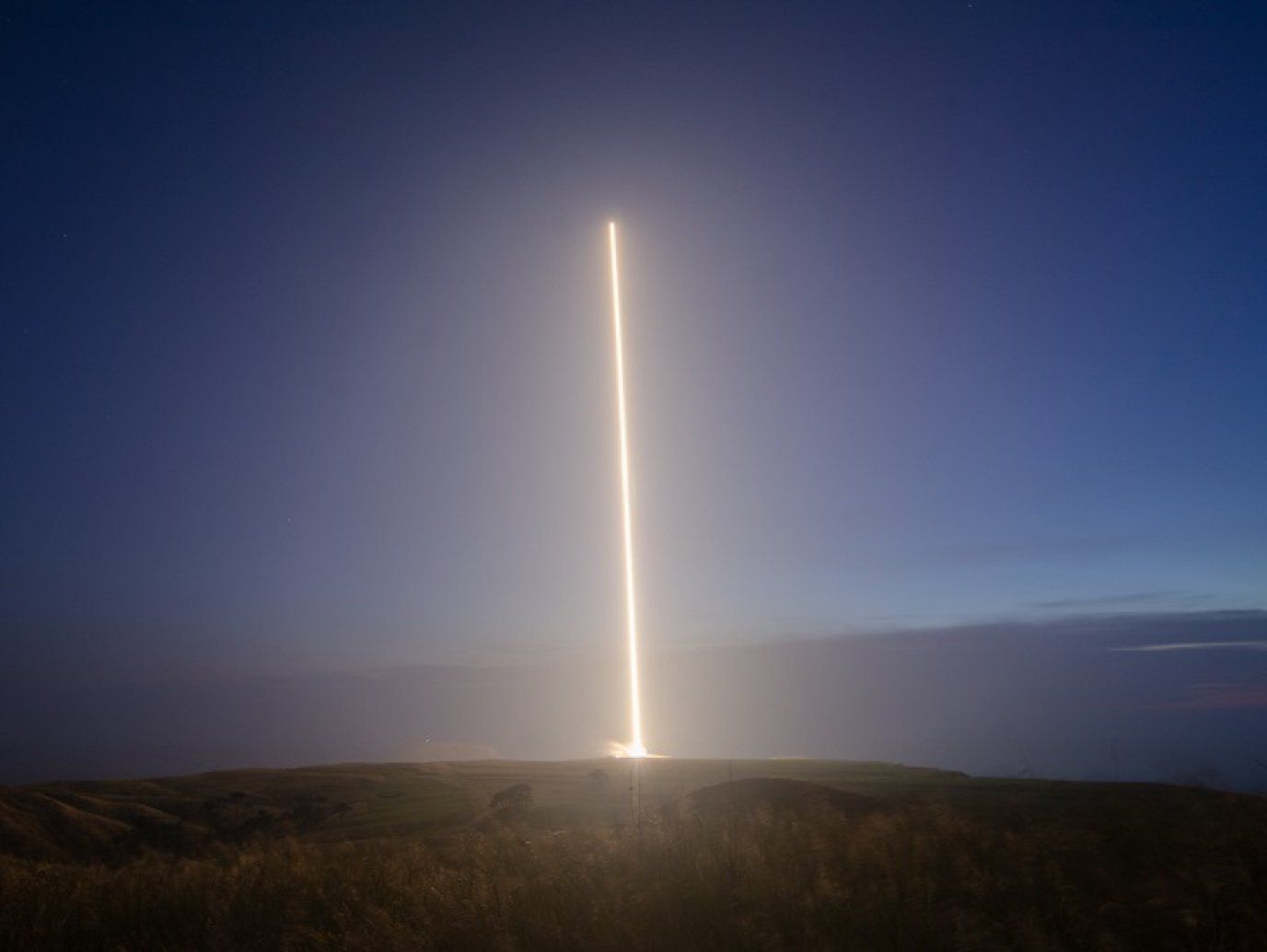
Rocket Lab laucnched US NRO payloads this year (Image: Sam Toms)
Is policy-making catching up in space? In some cases it is being forced to
One point we often raise is that of law-making lagging behind this technological revolution in space. Policies will need to be updated as humankind looks to exploit the riches of space. But also, policies are being forced to change due to the impact shifting international relations on Earth.
US vice president Kamala Harris has announced that the US will update commercial space regulations, in order to meet the needs of the rapidly growing private sector, claiming that current rules are “simply outdated”. Whilst not yet mentioning specific changes, it must be considered whether any new policies may suit increased international cooperation, or look to only boost US-led space innovation. Policy update could certainly be a positive sign for the US market, but how will it be received by the international market, and how can the world incorporate international rules to allow for inclusive and equal opportunities in space?
Fallout from the Ukraine conflict also continues to affect relations in the space sector, to the extent that policy has been forced to change. Long-stading launch relationships between Russia, Europe and the US have taken a blow, and SpaceX will now look to provide their launch services in Europe (perhaps temporarily whilst Ariane wait to release their Ariane 6 rocket, amongst other developing European launch providers). France have also opted-out of partnering with Russia for what would have been a cooperative project to develop an orbiter for the Indian Space Agency (ISRO).
Russia have also hinted further towards exiting the ISS, with the presentation of a model of their own “Ross” space station. However, for now, the ISS continues to a beacon of hope for political neutrality and cooperation in space, as Russian cosmonauts this week carried out work to fit the European robotic arm to the exterior of the ISS.
There are also questions being raised about the role of private companies in providing services to military customers. How can the commercial sector remain neutral in space, when they launch military satellites and observation technologies? Rocket Lab claim that the Ukraine conflict has softened its public image in New Zealand, in relation to its military launch ties. Whilst this may be good news for the company and their image on the world stage, is it almost a direct admission to be taking sides in an international conflict, and thus voiding their neutrality? A member of the Rocket Lab Monitor group in New Zealand stated that, despite feeling for the Ukrainian people, New Zealand shouldn’t be participating in “someone else's war”.
Is it important that policies are set in regards to how far the commercial sector can work with military bodies before they become directly involved in international conflict and politics? Political neutrality in space is vital if we are to build a peaceful and successful future in space, for all humankind.
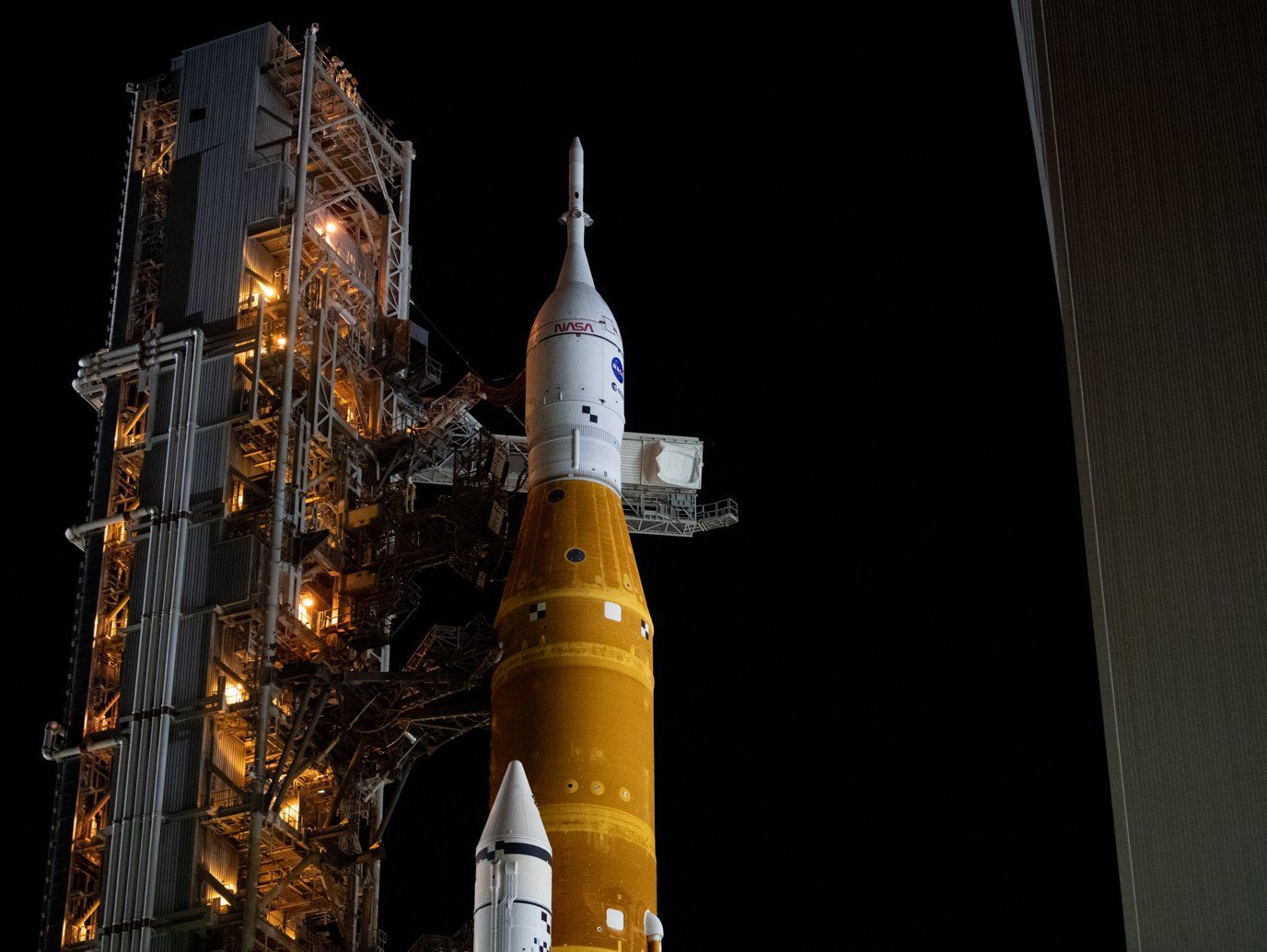
Artemis missions also set to become giant of space? (Image: NASA/Joel Kowsky)
We’re standing on the shoulders of giants
The heroes of the space sector have previously been graduated from a small number of groups, mostly from NASA, the USSR and Russia. Household names such as Yuri Gagarin, Sputnik, the Apollo Missions or Voyager have inspired generations to dream about space and the origins of the universe.
Another one of these names is being made later this month, as NASA rolls out their giant SLS rocket for the first Artemis launch, in an unmanned mission around the Moon, laying the foundations for humankind’s return to the lunar surface. Will the name Artemis be another name that is remembered for generations to come? NASA have also announced a mission to explore the largest known moon of Saturn. The moon, Titan, is thought to contain water ice and other organics. Interestingly, the mission will use a rotor-vehicle, similar to the Ingenuity helicopter on Mars.
But now there are also new industry pioneers, coming form the private sector. One of these, most notably this year, has been Rocket Lab. After pushing their Electron rocket to its limits, they will now strive to become the first private company to establish a mission to Venus, by 2023, also using Electron and Photon, which were used for the CAPSTONE mission.
As we fondly remember (and still benefit from) the achievements of the Voyager mission 45 years on, perhaps the new household names such as SpaceX or Rocket Lab will live on for just as long, or even longer. As global interest in the benefits of outer space grows, let us hope they can also be remembered for laying the foundations for a peaceful and cooperative future in outer space.
Share this article
External Links
This Week
*News articles posted here are not property of ANASDA GmbH and belong to their respected owners. Postings here are external links only.




















